Great Bulmoor Farm caerleon
The oldest farm in Monmouthshire
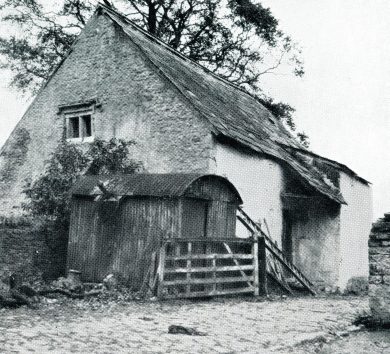
Of all the dozens of farms in our family, the one we recall most from childhood is Great Bulmoor, less than ten minutes by car from our home in Langstone. It was home to Uncle Phil and Auntie Irene. Phillip Phillips, to give him his full name, was a nephew of our grandmother Catherine Phillips. Born at Great Bulmoor, he spent his entire life there until his passing in 1983.
The farm held a special magic for us, nestled beside the legendary Bulmoor Lido, a place of endless summer fun. We remember it as a large and fascinating place, complete with a cider press, orchard, and farm animals. However, as children, we were unaware of its deeper history. We had no idea that a Roman graveyard lay hidden within the orchard or that Uncle Phil unearthed Roman artifacts with almost every dig of his fields. Researching this page has been an enlightening journey into the farm’s rich past. We have opted to use the spelling Bulmoor for the farm, but many variations exist including Bull More, Bullmore and Bullmoor.
A Historic Farm
Great Bulmoor has a storied history. In 1921, the South Wales Argus recorded it as the oldest farm in Monmouthshire, with some of its existing buildings dating back to the 16th century. The name “Great Bulmoor” refers not to the substantial farmhouse that now fronts Bulmoor Road but to the modest whitewashed cottage and stone outbuildings that stood between the road and the River Usk. One of these stone buildings housed a famous horse-powered cider press. Apples were placed in a trough, and a horse would walk in circles, hauling a heavy roller to crush them. The pulp was then pressed before the juice was transferred to a cool cellar beneath a lower outhouse.
Great Bulmoor is also renowned for its Roman discoveries. The first recorded excavation took place in 1815, uncovering a Roman building and gravestones. Further excavations in 1975 revealed structures dating from the 2nd or 3rd century AD. A Roman cemetery once stood in the farm’s orchard. The author and historian Arthur Machen suggested that a retired officer of the 2nd Augustan Legion had a villa at Bulmoor, possibly with a private cemetery. The farm’s Roman connections are further supported by the existence of a steep path leading from the farm to St Alban’s, where a Roman martyr was buried.
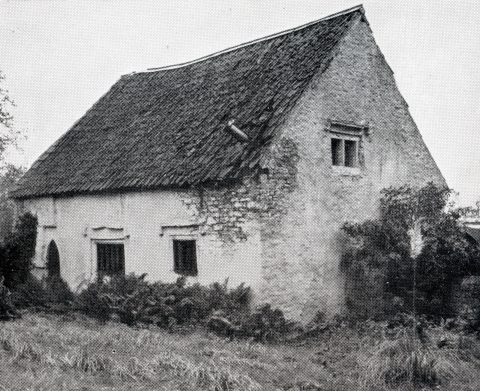
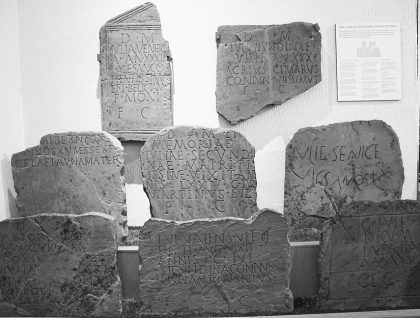
19th Century at the Farm
The site of the Roman cemetary at Bulmore was first identified in 1815 when a large masonry building was discovered, containing eight tombstones that has been laid face down on the floor. One notable inscription from a stone found on the farm read: “Hail, Julia, dearest wife: For ever farewell.” Later excavations in 1975 uncovered a substantial multi-phase masonry building also containing reused tombstones.
Census records reveal that in the 19th century, Great Bulmoor had a high turnover of occupants. In 1881, an auctioneer named Mr. Jones lived there, followed in 1891 by Evan Thomas, a 60-year-old farmer from Wenvoe, who resided at the farm with his wife and a servant. By the turn of the century, 33-year-old Alfred G. Moxham, born in Chew Magna, was the resident farmer. He had been living at Kemeys House with his parents but after marrying Ann, he moved to Bulmoor, where they had two children. They later emigrated to Canada to start a new life.
The Phillips Family at Bulmoor
Our family’s connection to Great Bulmoor began in 1908 when our great-granduncle, Ebenezer ‘Lewis’ Phillips, married Maud Morgan from St Brides, Wentloog. Lewis was the son of the late Ebenezer Phillips of Bryngwyn Farm, and Maud was the daughter of William Morgan, a grocer. The couple purchased and settled at Great Bulmoor Farm and cider house, where they became close neighbours of the Skinners at Abernant Farm.
Their only son, Phillip Frederick Lewis Phillips, was born in 1909. The 1911 Census records a busy farm, with Lewis as master farmer and two permanent workers living in the outbuildings: Charles Hallett from Somerset, employed as a carter, and John Walters from Nash, listed as a farmer. Lewis bred horses and entered them in local agricultural shows. By 1921, Charles Hallett had become a wagoner, joined at Bulmoor by his brother John, a cowman. The land at Bulmoor, along with surrounding farms, was regularly used by the Llangibby Hunt.
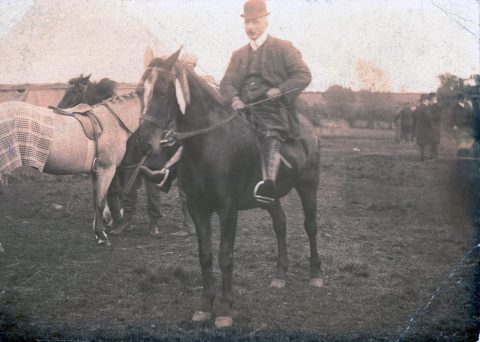
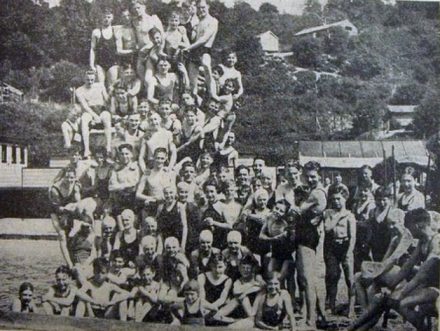
Bulmore Lido
In 1934, a portion of Bulmoor farmland was sold to a private company for the construction of an open-air swimming pool, café, and restaurant. The site, later named Bulmore Lido, opened to the public in July and quickly became a popular attraction, drawing hundreds of visitors who arrived by omnibus, on foot, or by bicycle. Spanning 8.5 acres and accessed through an old iron turnstile, the complex featured a large adult pool, a smaller children’s pool, and adjoining lawns, making it Newport’s favorite out-of-town retreat.
Bulmore Lido remained a beloved destination for over five decades, but shifting leisure trends eventually led to its decline. By the late 1980s, the lido was demolished, yet fond memories of sunny days spent there endure. Posts on Facebook and articles in The Argus continue to attract dozens of comments from those who once swam in its waters.
Important Visitors at Bulmoor
In 1955, renowned local historian Fred J. Hando visited Great Bulmoor, one of several trips he made over the years. During his visit, he met 76-year-old Lewis Phillips, who he described as a cheerful pipe smoker, and his son Phillip who gave him a tour of the cider house. Fred Hando fondly recalled watching the cider press in action as a boy and was delighted to learn that Lewis planned to restore it using apples from his own orchard. Hando provided a detailed description of the cider house, noting its 16th-century doorway, ancient timber windows, and the oak winding staircase leading to the attic
He also shared fascinating accounts of Roman graves discovered in the orchard and the many artifacts Phillips had unearthed while working the land. His reflections on Bulmoor were later published in one of his books and featured in the South Wales Argus, accompanied by his beautifully detailed drawings. The farm also proved of great interest to Sir Cyril Fox and Lord Raglan who visited in the 1950s. They were there to survey the farm for volume two of their book – Monmouthshire Houses: A Study of Building Techniques and Smaller House-Plans, published 1955. The photos on this page came from that visit.
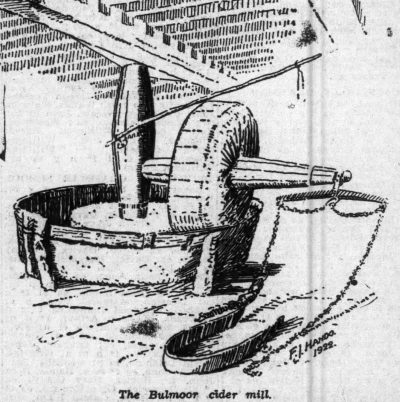
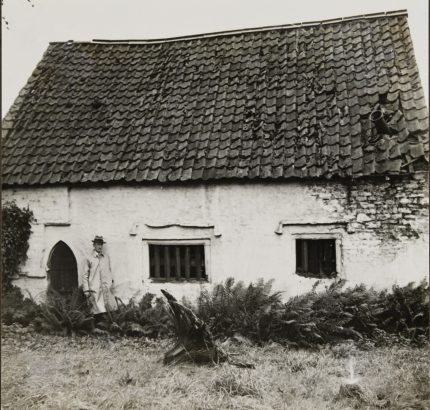
Mysteries of the Farm
Great Bulmoor’s history holds many intriguing questions. An Austrian bishop once visited the Phillips family, claiming that his records indicated a German church once stood near the cider house. Archaeologist Sir Mortimer Wheeler, Director of both the National Museum of Wales and London Museum, also visited, believing that a Roman suburb once occupied the site. He urged Phillip Phillips to document and preserve, all his discoveries.
One of the most enduring tales handed down by Phillip Phillips was of ghostly apparitions. A rational farmer, he reported seeing a legion of Roman soldiers marching through his home at night, apparently on their knees! As children, we dismissed this as a tall story, but knowing now about the Roman graves on the site, it makes more sense. A 2024 episode of the BBC show Uncanny discussed a similar phenomenon. The expert explained that the Roman soldiers only appeared to be walking on their knees because the ground levels that existed in their time were considerably lower than today. So perhaps Uncle Phil truly did have Roman visitors!
The End of an Era
Lewis Phillips passed away at Bulmoor in 1961, followed by Maud in 1967. Their son, Philip Phillips, inherited the farm and lived there with his wife, Irene, until her passing in 1977. With no children of their own, Philip continued to manage the farm, but as he grew older, he began renting out the land. Russell Haines, a local farmer from nearby Little Bullmore Farm, raised cattle at Bulmoor in the 1970s and 80s and harvested hay. Russell’s son, Nick, fondly recalls those days and the man they affectionately knew as ‘Uncle Phil.’
“I can still remember every field and the layout of the farm, riding in the tractor with dad baling hay all day in the summertime. We used to check the cattle and then visit Uncle Phil in the house. I remember him in his chair with all the books and newspapers around him. The farmyard was amazing, even as a kid I remember thinking this is special. The cider mill was impressive as was all the old machinery and wagons parked in the cart sheds. Dad used to winter cattle in the walled open cattle yard with those lovely arched cattle sheds where they used to lie.”
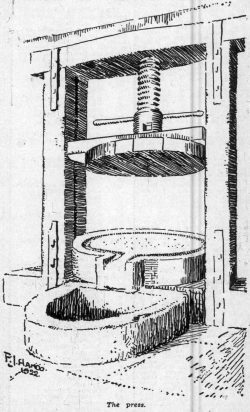
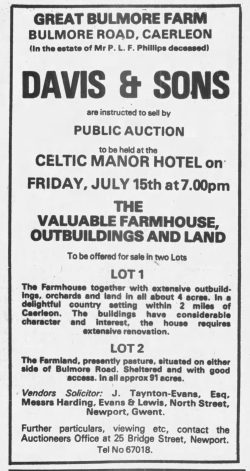
Bulmoor Farm Sold
Philip remained at the farm until his passing in 1983 at the age of 74, having spent his entire life at Bulmoor. Our eldest sister, Cathy, attended his funeral alongside our mother and grandmother at St. Illtyd’s Church in Mamhilad, where he was laid to rest beside Irene. The service was attended by many from the farming community, including the Haines family of Little Bullmore. Following Philip’s death, his estate was auctioned at the Celtic Manor on July 15th 1983.
Great Bulmoor was divided into two lots: Lot One included the farmhouse, outbuildings, orchard, and four acres of land, while Lot Two comprised 91 acres of farmland. The new owner of Lot One carried out extensive renovations on the farmhouse before selling it as an executive home in 1988 The other farm buildings were developed into separate residential units. Meanwhile, local farmer Mr. Richardson purchased the Bulmoor land, having sold his smaller farm in Christchurch to the Celtic Manor.
After buying the land Mr Richardson excavated topsoil on land opposite Great Bulmoor to build a new farmhouse and barn. His work uncovered a network of Roman walls. Archaeologist David Zienkiewicz led an emergency dig, confirming Phillip’s long-held belief that a civilian Roman settlement once stood on the land.
Today, Bulmoor is owned by the Celtic Manor and consists of three separate residential properties: Bulmoor Farmhouse, The Great Bulmoor Farm Cottages, and The Cider House. While the views of Caerleon and the River Usk remain, they now include the backdrop of a golf course. The legacy of Great Bulmoor lives on, not only in our memories but in its rich, historic past.
Something to add to the story of Great Bulmoor Farm? Please email us: [email protected]

